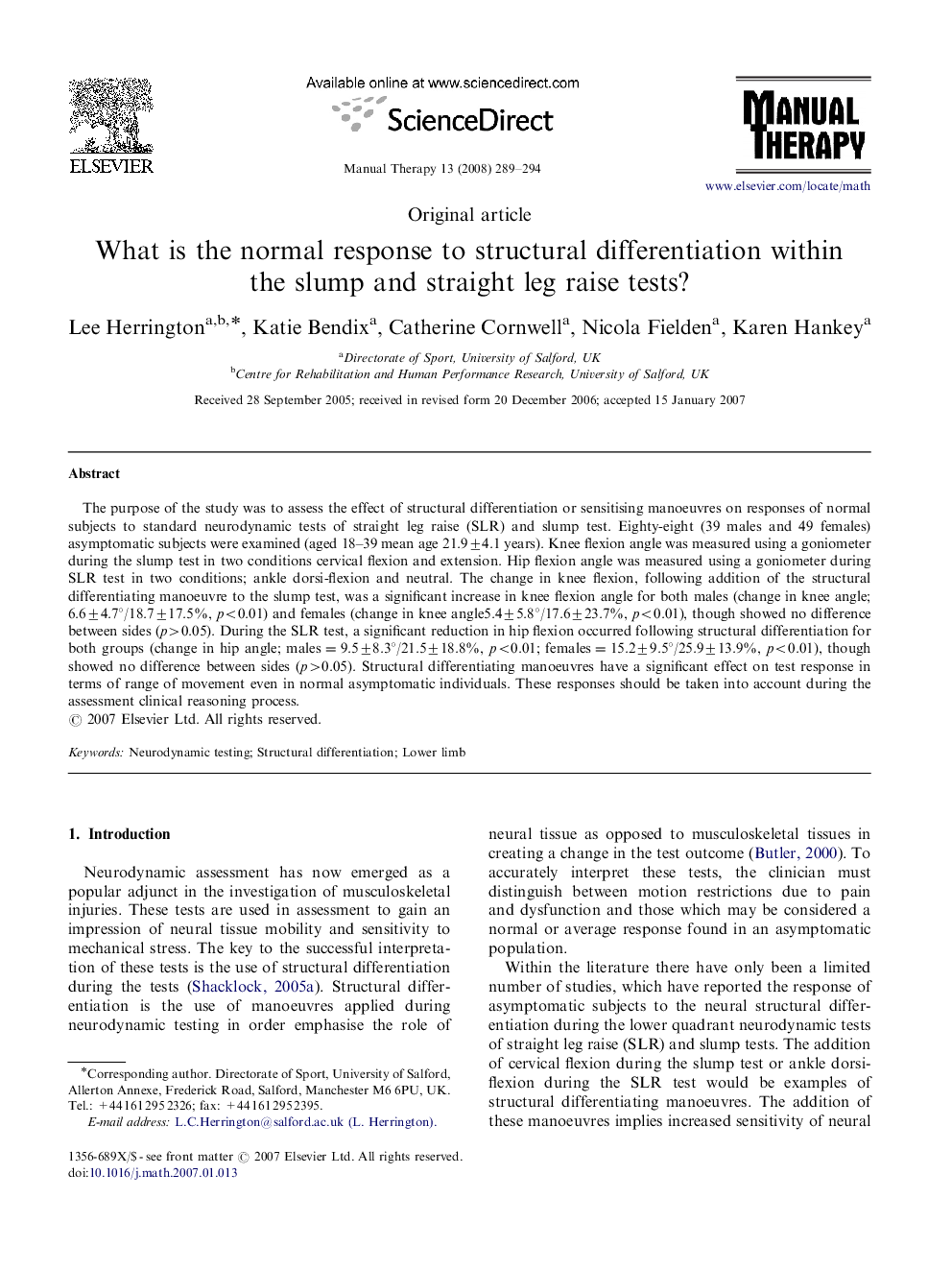| Article ID | Journal | Published Year | Pages | File Type |
|---|---|---|---|---|
| 2626029 | Manual Therapy | 2008 | 6 Pages |
The purpose of the study was to assess the effect of structural differentiation or sensitising manoeuvres on responses of normal subjects to standard neurodynamic tests of straight leg raise (SLR) and slump test. Eighty-eight (39 males and 49 females) asymptomatic subjects were examined (aged 18–39 mean age 21.9±4.1 years). Knee flexion angle was measured using a goniometer during the slump test in two conditions cervical flexion and extension. Hip flexion angle was measured using a goniometer during SLR test in two conditions; ankle dorsi-flexion and neutral. The change in knee flexion, following addition of the structural differentiating manoeuvre to the slump test, was a significant increase in knee flexion angle for both males (change in knee angle; 6.6±4.7°/18.7±17.5%, p<0.01) and females (change in knee angle5.4±5.8°/17.6±23.7%, p<0.01), though showed no difference between sides (p>0.05). During the SLR test, a significant reduction in hip flexion occurred following structural differentiation for both groups (change in hip angle; males=9.5±8.3°/21.5±18.8%, p<0.01; females=15.2±9.5°/25.9±13.9%, p<0.01), though showed no difference between sides (p>0.05). Structural differentiating manoeuvres have a significant effect on test response in terms of range of movement even in normal asymptomatic individuals. These responses should be taken into account during the assessment clinical reasoning process.
